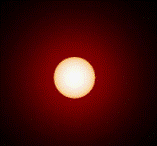Department of Physics and Astronomy: Publications and Other Research

Norman R. Simon Papers
Influence of Opacity on the Pulsational Stability Of Massive Stars with Uniform Chemical Composition
Document Type
Article
Date of this Version
6-1970
Citation
THE ASTROPHYSICAL JOURNAL, Vol. 160, June 1970
Abstract
The maximum mass of homogeneous stars which are stable against nuclear-energized pulsations has been re-determined by using a full opacity formula and an accurate treatment of the equilibrium structure of the outer layers where non-scattering sources of opacity are important damping agents. Sixteen composition mixtures were used, covering the range 0 ≤ Y ≤ (1 - Z) and 0 ≤ Z ≤ 0.05. The nuclear energy sources were taken to be the CN cycle and the triple-a process. Due to the primary influence of bound-free absorption by metals (and, to a lesser extent, of free-free absorption by hydrogen and helium), the critically stable non-dimensional mass of hydrogen-burning stars, (M/Mʘ)μ2, can range from 27 to 94, depending on the chemical composition. For likely chemical compositions of extreme Population I, the actual critical mass is probably 80-120 M ʘ. For homogeneous helium-burning stars, the critical mass ranges from 13 to 19 M ʘ, depending on the metal abundance.


Comments
Copyright 1970. The University of Chicago. All rights reserved.